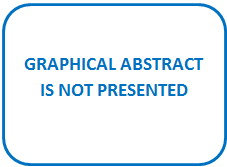Empirical analysis of webometric ranking in Nigeria polytechnics education sector
DOI:
https://doi.org/10.15587/2706-5448.2022.270322Keywords:
polytechnics, webometrics, ranking, transparency, visibility, ICT impact, Google Scholar, ResearchGate, improve webometric rankingAbstract
The January 2022 edition of webometric ranking placed Yaba College of Technology as number one from 152 polytechnics in Nigeria. The ranking weight is 66 for country ranking, 8162 world ranking, Impact, Openness, and Excellence of 9698, 4558, and 7190 respectively. The negative variation and low webometric ranking of Yaba College of Technology that happened to be the first higher institution of learning in Nigeria with the slogan the first and still the best is a point of concern and motivates this research work. This research work collected data to evaluate the indicators for webometric ranking among the students and staff of Yaba College of Technology, a total of 346 were sampled students 44.51 % and Staff 55.49 %. The discussion and analysis of data obtained revealed that the poor webometric ranking is due to inadequacy of the necessary ICT infrastructure to encourage robust web presence; non-availability of up-to-date and scanty content on the Polytechnics website; Non-frequent usage of the Polytechnic website by the staff and students of the Polytechnic; the inadequate number of external networks (subnets) links with Polytechnic website; insufficient number of the top-cited publications in high impact Journals from the staff of the Yaba College of Technology; and Scanty number of the profile of staff from the Polytechnic on Google Scholar and ResearchGate, etc. among others. This research work opined that low webometric ranking could result in the following negative impact on the polytechnics lowering the esteem of the Polytechnic in the eyes of stakeholders, potential students and funding agencies, academic exchange with reputable institutions from other parts of the world for teaching, learning and research may writhe. The consequence of our findings recommendations was made to improve webometric ranking in future.
Supporting Agency
- Presentation of research in the form of publication through financial support in the form of a grant from SUES (Support to Ukrainian Editorial Staff).
References
- Aguillo, I. F., Ortega, J. L., Fernández, M. (2008). Webometric Ranking of World Universities: Introduction, Methodology, and Future Developments. Higher Education in Europe, 33 (2-3), 233–244. doi: https://doi.org/10.1080/03797720802254031
- Aguillo, I. F. (2014). Information on the Rankings Web, including the Webometrics Ranking of Universities General Description of the Ranking and Its History. Available at: https://pdfs.semanticscholar.org/e779/6ddbd62e2626f4ecc057c4d50875e3754665.pdf
- Anyira, I. E., Idubor, I. (2020). Poor Webometrics Ranking of Nigerian Higher Institutions: Causes, Implications, and Solutions. Lincoln Library Philosophy and Practice.
- Björneborn, L., Ingwersen, P. (2004). Toward a basic framework for webometrics. Journal of the American Society for Information Science and Technology, 55 (14), 1216–1227. doi: https://doi.org/10.1002/asi.20077
- Bershadskaya, M., Voznesenskaya, Y., Karpenko, O. (2016). Webometrics Ranking in the Context of Accessibility of Higher Education. Universal Journal of Educational Research, 4 (7), 1506–1514. doi: https://doi.org/10.13189/ujer.2016.040702
- Nissom, S., Narayanan, K. (2012). The Study of Webometrics Ranking of World Universities. Technical Report. Faculty of Computer Science and Information Technology.
- Thelwall, M. (2012). A history of webometrics. Bulletin of the American Society for Information Science and Technology, 38 (6), 18–23. doi: https://doi.org/10.1002/bult.2012.1720380606
- Kunosić, S., Čeke, D., Zerem, E. (2019). Advantages and Disadvantages of the Webometrics Ranking System. Available at: https://www.intechopen.com/chapters/67912 Last accessed: 31.01.2022
- Khamala, D. F., Makori, E. O., Njiraine, D. M. (2018). Webometrics Ranking and Its Relationship to Quality Education and Research in Academic Institutions in Kenya. Library Philosophy and Practice. Libraries at the University of Nebraska-Lincoln. Eisen 1522-0222. Available at: http://digitalcommons.unl.edu/libphilprac/2020
- Kiremire, E. (2009). African University Ranking Sub-Saharan Africa: 2009: University of Namibia. New Era.
- National Universities Commission. Available at: https://www.nuc.edu.ng/
- National Board for Technical Education. Available at: https://net.nbte.gov.ng/
- First edition of 2022: Web data collected during January 2022 (the 19th year!). Available at: https://www.webometrics.info/en/current_edition Last accessed: 02.02.2022
- Ati, O. F. (2017). Low Webometric Ranking of African Universities: Causes, Consequences and Cure. International Journal of Development Strategies in Humanities, Management and Social Sciences, 7 (3), 74–80.
- Rauhvargers, A. (2011). Global University Rankings and their Impact. Brussels: European University Association.
- Scimago Institutions Rankings. Available at: https://www.scimagoir.com/

Downloads
Published
How to Cite
Issue
Section
License
Copyright (c) 2022 Nureni Asafe Yekini, Oyeranmi Adigun, Agnes Kikelomo Akinwole

This work is licensed under a Creative Commons Attribution 4.0 International License.
The consolidation and conditions for the transfer of copyright (identification of authorship) is carried out in the License Agreement. In particular, the authors reserve the right to the authorship of their manuscript and transfer the first publication of this work to the journal under the terms of the Creative Commons CC BY license. At the same time, they have the right to conclude on their own additional agreements concerning the non-exclusive distribution of the work in the form in which it was published by this journal, but provided that the link to the first publication of the article in this journal is preserved.







